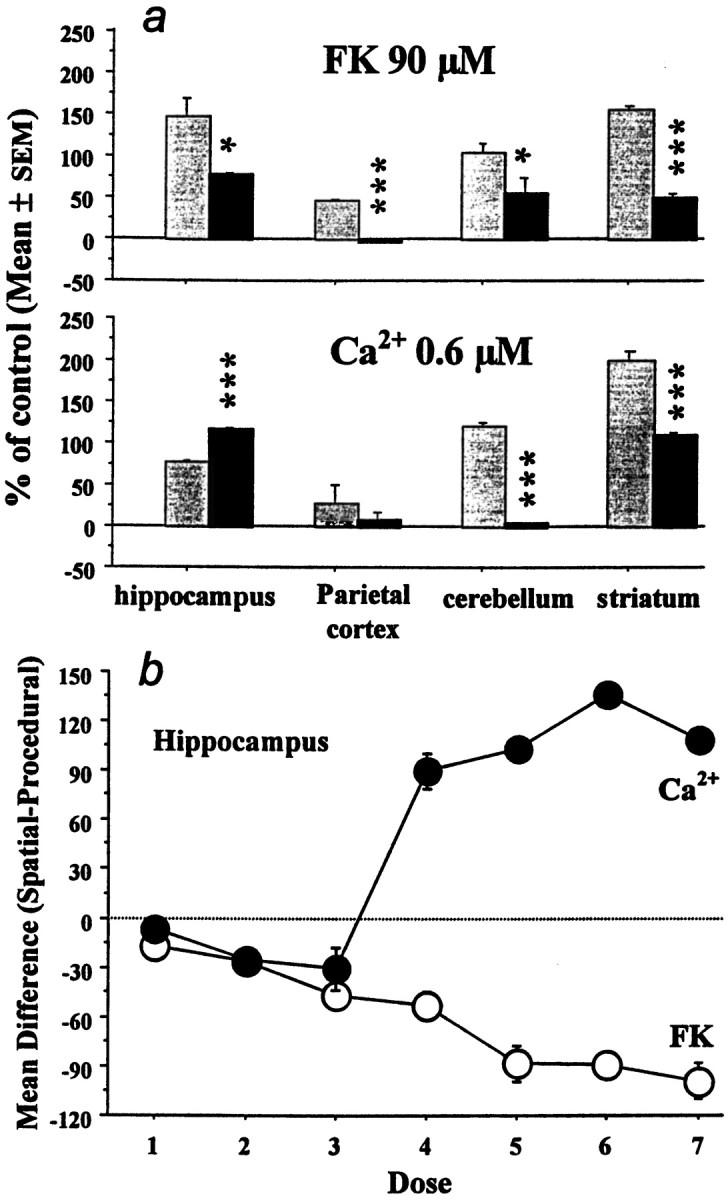Fig. 6.

Comparison of task-dependent changes in forskolin- and calcium-dependent adenylyl cyclase activity. A, Changes observed after procedural (shaded bars) or spatial (black bars) learning in the different brain regions. Data are shown for concentrations of FK and Ca2+ at which maximal stimulation of AC was observed. Procedural training uniformly resulted in larger increases in FK-dependent AC stimulation than did spatial training. Similar results were seen in the cerebellum and striatum for Ca2+-dependent AC. However, spatial training produced the larger increase in Ca2+-dependent AC in the hippocampus. *p < 0.05; ***p < 0.001, indicates significant differences between the two groups, respectively. B, Illustration of the dose-dependent nature of the differential response of hippocampal ACs to forskolin and calcium after spatial or procedural training. FK concentrations ranged from 20 nm to 90 μm, whereas Ca2+ concentrations were stepped from 0.0 to 6.0 μm. For FK, the decrease in AC activity seen with spatial learning was dose-dependent. A similar relationship was seen for Ca2+ at low concentrations but was reversed once the [Ca2+] rose to 0.2 μm. At these higher Ca2+concentrations, a much greater increase in AC activity was seen after spatial training.
